
How to Use MQ 4: Examples, Pinouts, and Specs
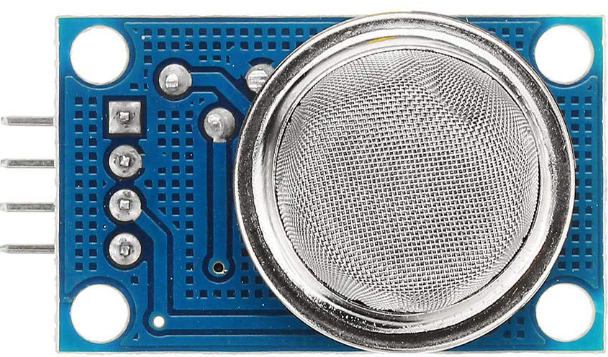
 Design with MQ 4 in Cirkit Designer
Design with MQ 4 in Cirkit DesignerIntroduction
The MQ-4 is a gas sensor designed to detect methane (CH₄) and natural gas concentrations in the air. It operates on the principle of resistive change, where the sensor's resistance varies in the presence of target gases. The MQ-4 provides an analog output signal proportional to the gas concentration, making it suitable for a wide range of applications.
Explore Projects Built with MQ 4
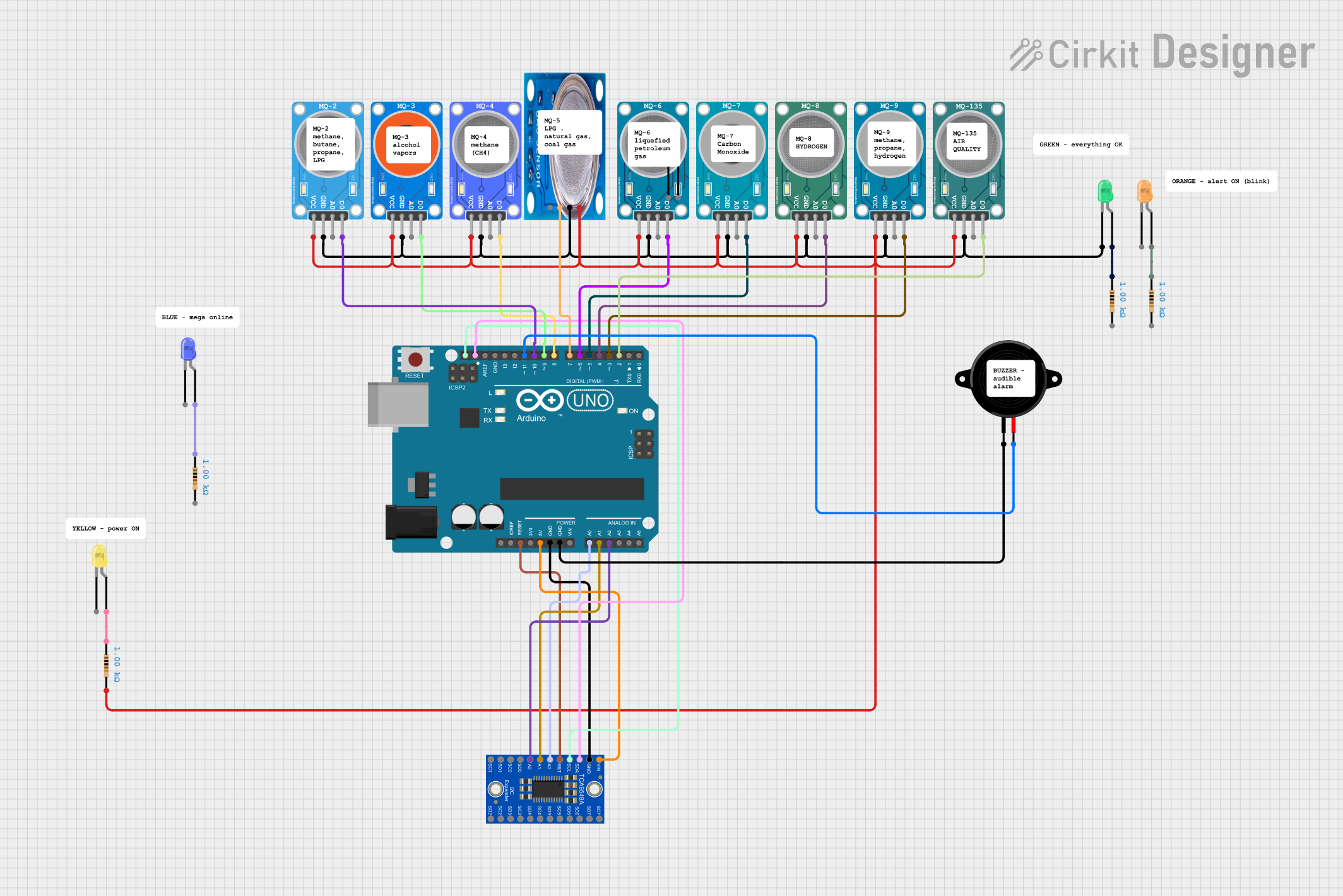
 Open Project in Cirkit Designer
Open Project in Cirkit Designer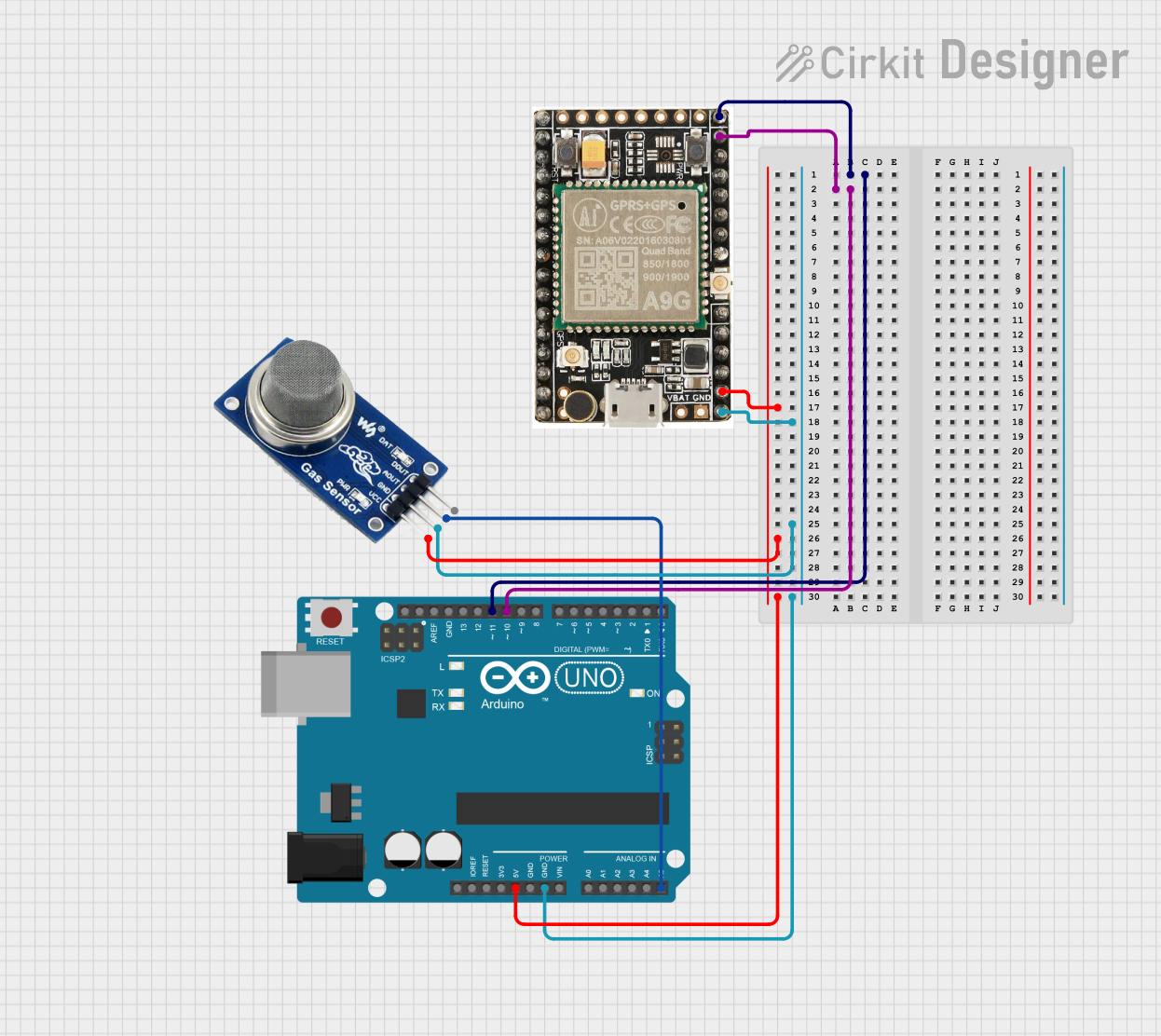
 Open Project in Cirkit Designer
Open Project in Cirkit Designer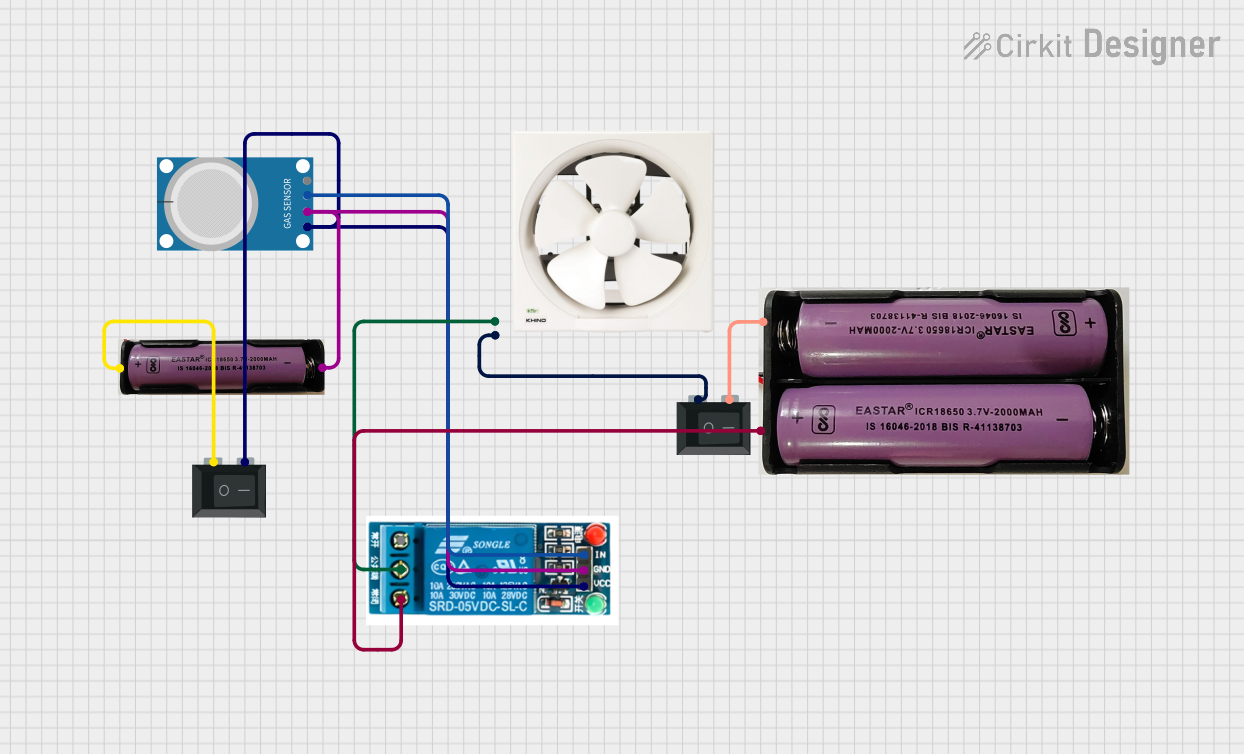
 Open Project in Cirkit Designer
Open Project in Cirkit Designer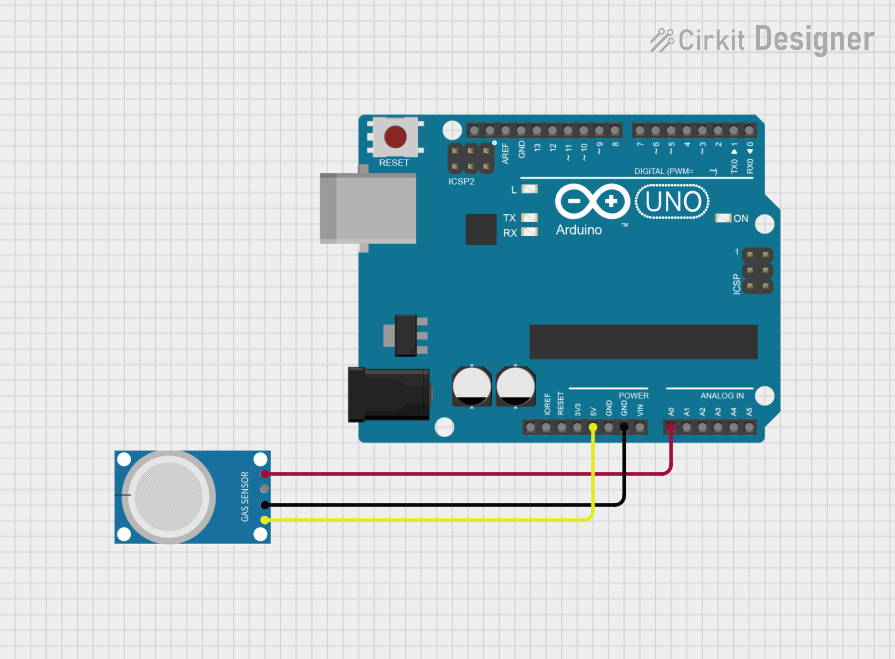
 Open Project in Cirkit Designer
Open Project in Cirkit DesignerExplore Projects Built with MQ 4

 Open Project in Cirkit Designer
Open Project in Cirkit Designer
 Open Project in Cirkit Designer
Open Project in Cirkit Designer
 Open Project in Cirkit Designer
Open Project in Cirkit Designer
 Open Project in Cirkit Designer
Open Project in Cirkit DesignerCommon Applications
- Gas leak detection in homes and industries
- Methane monitoring in mining and oil fields
- Natural gas detection in HVAC systems
- Environmental monitoring systems
- IoT-based gas detection projects
Technical Specifications
The MQ-4 sensor is a robust and reliable component with the following key specifications:
| Parameter | Value |
|---|---|
| Operating Voltage | 5V DC |
| Load Resistance (RL) | Adjustable (typically 10 kΩ) |
| Heater Voltage (VH) | 5V ± 0.2V DC/AC |
| Heating Current | < 150 mA |
| Gas Detection Range | 200 ppm to 10,000 ppm (CH₄) |
| Preheating Time | ≥ 24 hours |
| Sensitivity | Detects methane and natural gas |
| Operating Temperature | -20°C to 50°C |
| Humidity Range | ≤ 95% RH |
| Output Signal | Analog voltage (proportional to gas concentration) |
Pin Configuration and Descriptions
The MQ-4 sensor typically comes with four pins or six pins, depending on the module version. Below is the pin configuration for the 4-pin version:
| Pin | Name | Description |
|---|---|---|
| 1 | VCC | Power supply input (5V DC) |
| 2 | GND | Ground connection |
| 3 | AOUT | Analog output signal (proportional to gas level) |
| 4 | DOUT | Digital output signal (threshold-based, optional) |
For the 6-pin version, two additional pins are used for the internal heater connections (H1 and H2). These are typically pre-wired in most modules.
Usage Instructions
How to Use the MQ-4 in a Circuit
- Power the Sensor: Connect the VCC pin to a 5V DC power supply and the GND pin to ground.
- Read the Output:
- Use the AOUT pin to read the analog voltage signal, which varies with the gas concentration.
- Optionally, use the DOUT pin for a digital signal if the module includes a comparator circuit.
- Preheat the Sensor: Allow the sensor to preheat for at least 24 hours before initial use to stabilize its readings.
- Connect to a Microcontroller: The analog output can be connected to an ADC (Analog-to-Digital Converter) pin of a microcontroller like the Arduino UNO for further processing.
Important Considerations and Best Practices
- Preheating: The sensor requires a preheating period of 24 hours for accurate readings. For subsequent uses, a shorter warm-up time (a few minutes) is sufficient.
- Calibration: Calibrate the sensor in a known gas concentration environment to improve accuracy.
- Ventilation: Ensure proper ventilation around the sensor to avoid saturation and false readings.
- Load Resistor: Adjust the load resistor (RL) value to optimize the sensor's sensitivity and output range.
- Avoid Contaminants: Keep the sensor away from water, oil, and corrosive gases, as these can damage the sensing element.
Example: Connecting MQ-4 to Arduino UNO
Below is an example of how to connect the MQ-4 sensor to an Arduino UNO and read the analog output:
Circuit Connections
- Connect the MQ-4's VCC pin to the Arduino's 5V pin.
- Connect the GND pin to the Arduino's GND.
- Connect the AOUT pin to the Arduino's analog input pin (e.g., A0).
Arduino Code
// MQ-4 Gas Sensor Example with Arduino UNO
// Reads the analog output of the MQ-4 sensor and prints the value to the Serial Monitor
const int gasSensorPin = A0; // Analog pin connected to MQ-4 AOUT
int sensorValue = 0; // Variable to store the sensor reading
void setup() {
Serial.begin(9600); // Initialize serial communication at 9600 baud
Serial.println("MQ-4 Gas Sensor Test");
}
void loop() {
sensorValue = analogRead(gasSensorPin); // Read the analog value from the sensor
Serial.print("Gas Sensor Value: ");
Serial.println(sensorValue); // Print the sensor value to the Serial Monitor
delay(1000); // Wait for 1 second before the next reading
}
Notes on the Code
- The
analogRead()function reads the voltage from the AOUT pin and converts it to a digital value (0–1023 for a 10-bit ADC). - The sensor value can be mapped to a gas concentration using a calibration curve provided in the sensor's datasheet.
Troubleshooting and FAQs
Common Issues and Solutions
No Output Signal:
- Check the power supply connections (VCC and GND).
- Ensure the sensor has completed its preheating period.
Inaccurate Readings:
- Verify the load resistor (RL) value is correctly set.
- Calibrate the sensor in a known gas concentration environment.
Fluctuating Output:
- Ensure the sensor is in a stable environment with consistent airflow.
- Avoid placing the sensor near heat sources or strong electromagnetic fields.
Sensor Not Responding to Gas:
- Confirm the target gas is within the sensor's detection range.
- Check for physical damage to the sensor or contamination.
FAQs
Q: Can the MQ-4 detect gases other than methane?
A: While the MQ-4 is optimized for methane and natural gas, it may respond to other combustible gases. However, its sensitivity and accuracy for non-target gases may be lower.
Q: How long does the MQ-4 last?
A: The sensor typically has a lifespan of 2–3 years under normal operating conditions.
Q: Can I use the MQ-4 outdoors?
A: The MQ-4 can be used outdoors, but it should be protected from water, extreme temperatures, and high humidity to ensure reliable operation.
Q: Is the digital output (DOUT) always available?
A: The DOUT pin is only available on MQ-4 modules with an onboard comparator circuit. Check your module's specifications to confirm.
By following this documentation, users can effectively integrate the MQ-4 gas sensor into their projects for reliable methane and natural gas detection.